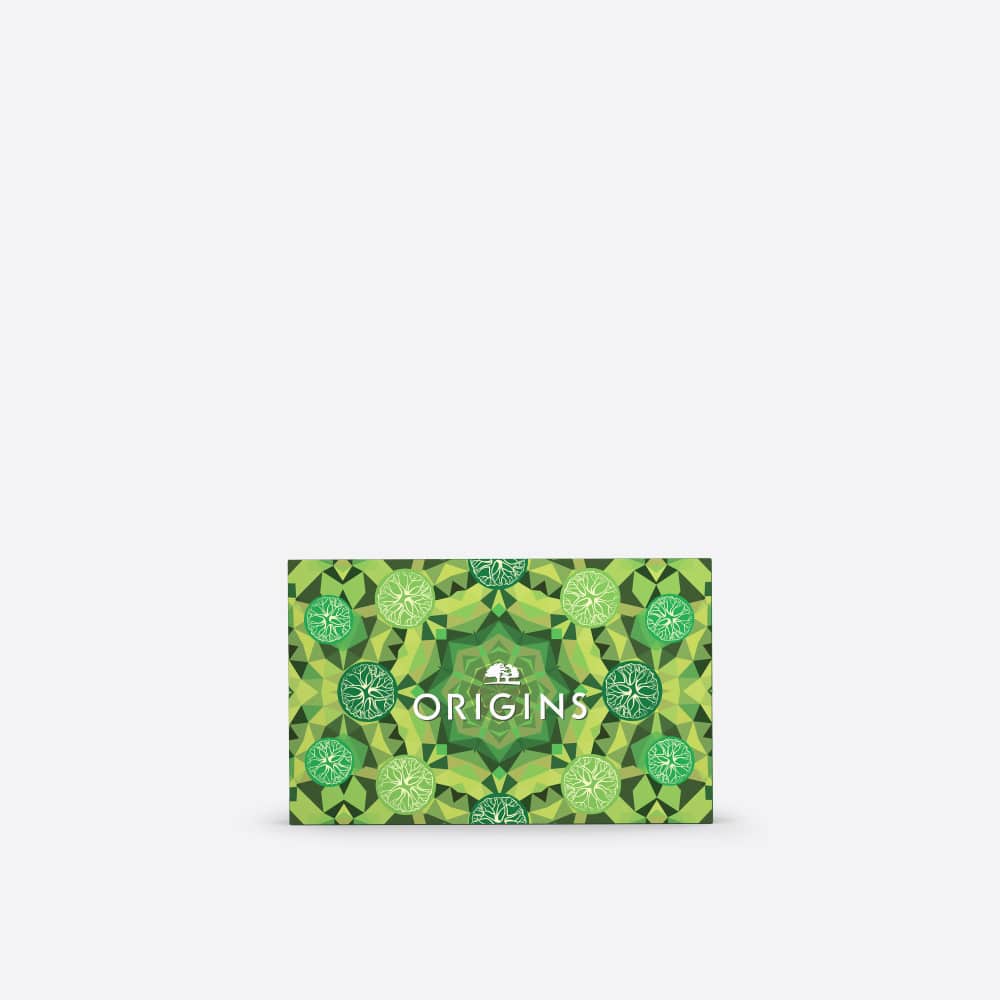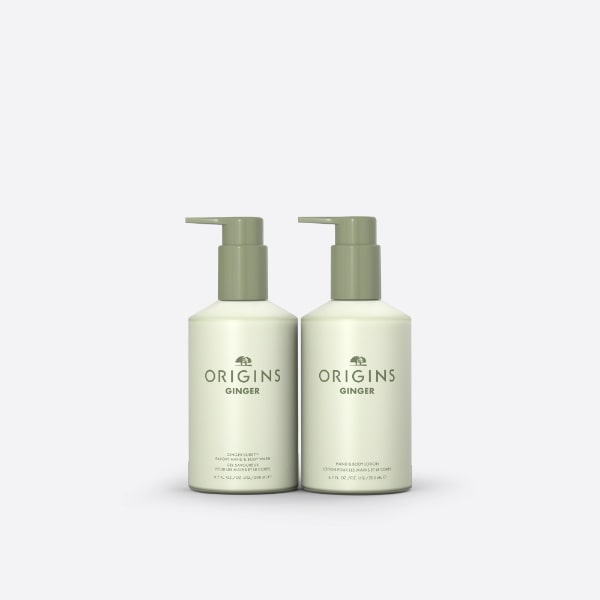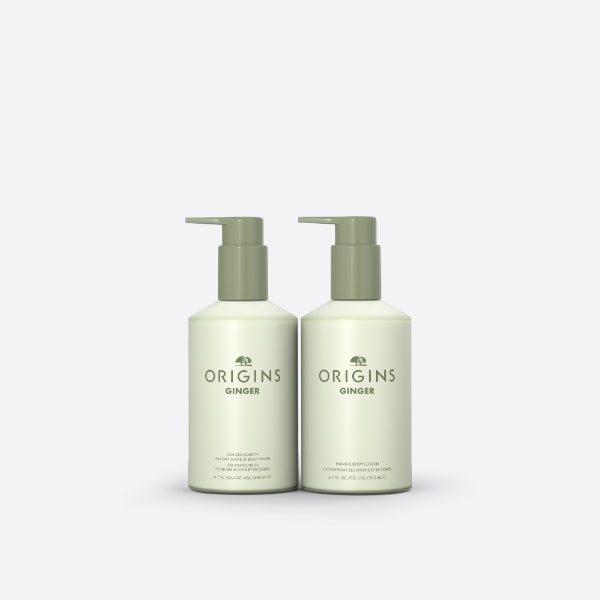Multi-MaskersFive Mini Masking Essentials ($35 Value)
$25.00
Key ingredients: Bamboo Charcoal, Avocado, Hyaluronic Acid, Vitamin C, Camphor
Benefit: 5 Masking Minis for Your Holiday Skin Goals
- Details
- How to Use
Vegan (Free-of animal derived ingredients)
Set Includes:
Drink Up™ Intensive Overnight Hydrating Mask with Avocado & Hyaluronic Acid 0.5 fl. oz.
This ultra-moisturizing overnight Avocado face mask instantly delivers 72-hour hydration and keeps skin—even hands—soft and smooth.
Clear Improvement™ Active Charcoal Mask to Clear Pores 0.5 fl. oz.
Infused with Bamboo Charcoal, this Charcoal Mask helps draw out deep-dwelling pore-cloggers and environmental toxins for clear-looking skin that feels perfectly pure.
Out of Trouble™ 10 Minute Mask to Rescue Problem Skin 0.5 fl. oz.
Made with calming Camphor, Salicylic Acid and Sulfur, this mask refines rough texture and soaks up surface oils.
GinZing™ Glow-Boosting Mask 0.5 fl. oz.
Our best face mask for glowing skin with Vitamin C and encapsulated Mineral Optics—for an instant, healthy-looking glow and brighter skin over time.
Clear Improvement™ Rich Purifying Charcoal Mask 0.5 fl. oz.
This vegan*, buttery-rich purifying face mask leaves all skin types—even dry skin—purified and comfortable, not tight or dry.
*Free of animal-derived ingredients
What It Is:
A mini face mask set—featuring five of our bestselling masks—to treat them or yourself.
What It Does:
It’s like five spa nights in one: Drink Up™ delivers 72-hour hydration; Out of Trouble™ absorbs excess oils that lead to blemishes; GinZing™ boosts radiance; and our Clear Improvement™ masks purify both oily and drier skin types.
We Formulate Without:
1,500+ ingredients in compliance with the EU’s stringent regulations. In addition, we are also free of: Parabens, phthalates, formaldehyde and formaldehyde-releasing agents, sodium lauryl sulfate (SLS), mineral oil, petrolatum, paraffin, diethanolamine (DEA) and polyethylene beads. Every Origins product is vegan we are proudly a brand free of animal derived ingredients.
Set Includes:
Drink Up™ Intensive Overnight Hydrating Mask with Avocado & Hyaluronic Acid 0.5 fl. oz.
This ultra-moisturizing overnight Avocado face mask instantly delivers 72-hour hydration and keeps skin—even hands—soft and smooth.
Clear Improvement™ Active Charcoal Mask to Clear Pores 0.5 fl. oz.
Infused with Bamboo Charcoal, this Charcoal Mask helps draw out deep-dwelling pore-cloggers and environmental toxins for clear-looking skin that feels perfectly pure.
Out of Trouble™ 10 Minute Mask to Rescue Problem Skin 0.5 fl. oz.
Made with calming Camphor, Salicylic Acid and Sulfur, this mask refines rough texture and soaks up surface oils.
GinZing™ Glow-Boosting Mask 0.5 fl. oz.
Our best face mask for glowing skin with Vitamin C and encapsulated Mineral Optics—for an instant, healthy-looking glow and brighter skin over time.
Clear Improvement™ Rich Purifying Charcoal Mask 0.5 fl. oz.
This vegan*, buttery-rich purifying face mask leaves all skin types—even dry skin—purified and comfortable, not tight or dry.
*Free of animal-derived ingredients
What It Is:
A mini face mask set—featuring five of our bestselling masks—to treat them or yourself.
What It Does:
It’s like five spa nights in one: Drink Up™ delivers 72-hour hydration; Out of Trouble™ absorbs excess oils that lead to blemishes; GinZing™ boosts radiance; and our Clear Improvement™ masks purify both oily and drier skin types.
We Formulate Without:
1,500+ ingredients in compliance with the EU’s stringent regulations. In addition, we are also free of: Parabens, phthalates, formaldehyde and formaldehyde-releasing agents, sodium lauryl sulfate (SLS), mineral oil, petrolatum, paraffin, diethanolamine (DEA) and polyethylene beads. Every Origins product is vegan we are proudly a brand free of animal derived ingredients.
Drink Up™ Intensive Overnight Hydrating Mask with Avocado & Hyaluronic Acid 0.5 fl. oz.
Twice a week or as needed, apply a thin layer to clean skin at bedtime. As a moisturizing hand mask, massage a thin layer into hands and allow to dry.
Clear Improvement™ Active Charcoal Mask to Clear Pores 0.5 fl. oz.
On makeup-free skin, open pores with warm, moist towel and layer on mask. Allow to dry and rinse. Use once a week or as often as needed.
Out of Trouble™ 10 Minute Mask to Rescue Problem Skin 0.5 fl. oz.
Squeeze a generous amount into hands. Smooth onto clean skin, being careful to avoid eye area. Relax for 10 minutes. Rinse thoroughly and pat skin dry with a towel. Use 1-2 times per week, or as desired.
GinZing™ Glow-Boosting Mask 0.5 fl. oz.
After cleansing, apply a thin layer to face and gently massage into skin to activate. Allow the mask to fully absorb; do not rinse.
Clear Improvement™ Rich Purifying Charcoal Mask 0.5 fl. oz.
First, open pores with a warm, moist towel. Then, use a generous amount to apply an even layer onto just-cleansed skin. Leave on for five minutes and allow to dry. Use this time to relax with a meditation that clears your mind while the formula helps clear your pores. Once it's dry, rinse well, and let your skin breathe a sigh of relief.
PRO TIP: This purifying vegan mask can be used alone or on drier areas like cheeks for a comfortable clean.
Twice a week or as needed, apply a thin layer to clean skin at bedtime. As a moisturizing hand mask, massage a thin layer into hands and allow to dry.
Clear Improvement™ Active Charcoal Mask to Clear Pores 0.5 fl. oz.
On makeup-free skin, open pores with warm, moist towel and layer on mask. Allow to dry and rinse. Use once a week or as often as needed.
Out of Trouble™ 10 Minute Mask to Rescue Problem Skin 0.5 fl. oz.
Squeeze a generous amount into hands. Smooth onto clean skin, being careful to avoid eye area. Relax for 10 minutes. Rinse thoroughly and pat skin dry with a towel. Use 1-2 times per week, or as desired.
GinZing™ Glow-Boosting Mask 0.5 fl. oz.
After cleansing, apply a thin layer to face and gently massage into skin to activate. Allow the mask to fully absorb; do not rinse.
Clear Improvement™ Rich Purifying Charcoal Mask 0.5 fl. oz.
First, open pores with a warm, moist towel. Then, use a generous amount to apply an even layer onto just-cleansed skin. Leave on for five minutes and allow to dry. Use this time to relax with a meditation that clears your mind while the formula helps clear your pores. Once it's dry, rinse well, and let your skin breathe a sigh of relief.
PRO TIP: This purifying vegan mask can be used alone or on drier areas like cheeks for a comfortable clean.
Vegan (Free-of animal derived ingredients)
Set Includes:
Drink Up™ Intensive Overnight Hydrating Mask with Avocado & Hyaluronic Acid 0.5 fl. oz.
This ultra-moisturizing overnight Avocado face mask instantly delivers 72-hour hydration and keeps skin—even hands—soft and smooth.
Clear Improvement™ Active Charcoal Mask to Clear Pores 0.5 fl. oz.
Infused with Bamboo Charcoal, this Charcoal Mask helps draw out deep-dwelling pore-cloggers and environmental toxins for clear-looking skin that feels perfectly pure.
Out of Trouble™ 10 Minute Mask to Rescue Problem Skin 0.5 fl. oz.
Made with calming Camphor, Salicylic Acid and Sulfur, this mask refines rough texture and soaks up surface oils.
GinZing™ Glow-Boosting Mask 0.5 fl. oz.
Our best face mask for glowing skin with Vitamin C and encapsulated Mineral Optics—for an instant, healthy-looking glow and brighter skin over time.
Clear Improvement™ Rich Purifying Charcoal Mask 0.5 fl. oz.
This vegan*, buttery-rich purifying face mask leaves all skin types—even dry skin—purified and comfortable, not tight or dry.
*Free of animal-derived ingredients
What It Is:
A mini face mask set—featuring five of our bestselling masks—to treat them or yourself.
What It Does:
It’s like five spa nights in one: Drink Up™ delivers 72-hour hydration; Out of Trouble™ absorbs excess oils that lead to blemishes; GinZing™ boosts radiance; and our Clear Improvement™ masks purify both oily and drier skin types.
We Formulate Without:
1,500+ ingredients in compliance with the EU’s stringent regulations. In addition, we are also free of: Parabens, phthalates, formaldehyde and formaldehyde-releasing agents, sodium lauryl sulfate (SLS), mineral oil, petrolatum, paraffin, diethanolamine (DEA) and polyethylene beads. Every Origins product is vegan we are proudly a brand free of animal derived ingredients.
Set Includes:
Drink Up™ Intensive Overnight Hydrating Mask with Avocado & Hyaluronic Acid 0.5 fl. oz.
This ultra-moisturizing overnight Avocado face mask instantly delivers 72-hour hydration and keeps skin—even hands—soft and smooth.
Clear Improvement™ Active Charcoal Mask to Clear Pores 0.5 fl. oz.
Infused with Bamboo Charcoal, this Charcoal Mask helps draw out deep-dwelling pore-cloggers and environmental toxins for clear-looking skin that feels perfectly pure.
Out of Trouble™ 10 Minute Mask to Rescue Problem Skin 0.5 fl. oz.
Made with calming Camphor, Salicylic Acid and Sulfur, this mask refines rough texture and soaks up surface oils.
GinZing™ Glow-Boosting Mask 0.5 fl. oz.
Our best face mask for glowing skin with Vitamin C and encapsulated Mineral Optics—for an instant, healthy-looking glow and brighter skin over time.
Clear Improvement™ Rich Purifying Charcoal Mask 0.5 fl. oz.
This vegan*, buttery-rich purifying face mask leaves all skin types—even dry skin—purified and comfortable, not tight or dry.
*Free of animal-derived ingredients
What It Is:
A mini face mask set—featuring five of our bestselling masks—to treat them or yourself.
What It Does:
It’s like five spa nights in one: Drink Up™ delivers 72-hour hydration; Out of Trouble™ absorbs excess oils that lead to blemishes; GinZing™ boosts radiance; and our Clear Improvement™ masks purify both oily and drier skin types.
We Formulate Without:
1,500+ ingredients in compliance with the EU’s stringent regulations. In addition, we are also free of: Parabens, phthalates, formaldehyde and formaldehyde-releasing agents, sodium lauryl sulfate (SLS), mineral oil, petrolatum, paraffin, diethanolamine (DEA) and polyethylene beads. Every Origins product is vegan we are proudly a brand free of animal derived ingredients.
Drink Up™ Intensive Overnight Hydrating Mask with Avocado & Hyaluronic Acid 0.5 fl. oz.
Twice a week or as needed, apply a thin layer to clean skin at bedtime. As a moisturizing hand mask, massage a thin layer into hands and allow to dry.
Clear Improvement™ Active Charcoal Mask to Clear Pores 0.5 fl. oz.
On makeup-free skin, open pores with warm, moist towel and layer on mask. Allow to dry and rinse. Use once a week or as often as needed.
Out of Trouble™ 10 Minute Mask to Rescue Problem Skin 0.5 fl. oz.
Squeeze a generous amount into hands. Smooth onto clean skin, being careful to avoid eye area. Relax for 10 minutes. Rinse thoroughly and pat skin dry with a towel. Use 1-2 times per week, or as desired.
GinZing™ Glow-Boosting Mask 0.5 fl. oz.
After cleansing, apply a thin layer to face and gently massage into skin to activate. Allow the mask to fully absorb; do not rinse.
Clear Improvement™ Rich Purifying Charcoal Mask 0.5 fl. oz.
First, open pores with a warm, moist towel. Then, use a generous amount to apply an even layer onto just-cleansed skin. Leave on for five minutes and allow to dry. Use this time to relax with a meditation that clears your mind while the formula helps clear your pores. Once it's dry, rinse well, and let your skin breathe a sigh of relief.
PRO TIP: This purifying vegan mask can be used alone or on drier areas like cheeks for a comfortable clean.
Twice a week or as needed, apply a thin layer to clean skin at bedtime. As a moisturizing hand mask, massage a thin layer into hands and allow to dry.
Clear Improvement™ Active Charcoal Mask to Clear Pores 0.5 fl. oz.
On makeup-free skin, open pores with warm, moist towel and layer on mask. Allow to dry and rinse. Use once a week or as often as needed.
Out of Trouble™ 10 Minute Mask to Rescue Problem Skin 0.5 fl. oz.
Squeeze a generous amount into hands. Smooth onto clean skin, being careful to avoid eye area. Relax for 10 minutes. Rinse thoroughly and pat skin dry with a towel. Use 1-2 times per week, or as desired.
GinZing™ Glow-Boosting Mask 0.5 fl. oz.
After cleansing, apply a thin layer to face and gently massage into skin to activate. Allow the mask to fully absorb; do not rinse.
Clear Improvement™ Rich Purifying Charcoal Mask 0.5 fl. oz.
First, open pores with a warm, moist towel. Then, use a generous amount to apply an even layer onto just-cleansed skin. Leave on for five minutes and allow to dry. Use this time to relax with a meditation that clears your mind while the formula helps clear your pores. Once it's dry, rinse well, and let your skin breathe a sigh of relief.
PRO TIP: This purifying vegan mask can be used alone or on drier areas like cheeks for a comfortable clean.










